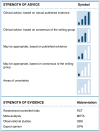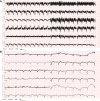Drug therapy and catheter ablation for management of arrhythmias in continuous flow left ventricular assist device's patients: a Clinical Consensus Statement of the European Heart Rhythm Association and the Heart Failure Association of the ESC
- PMID: 39478667
- PMCID: PMC11580222
- DOI: 10.1093/europace/euae272
Drug therapy and catheter ablation for management of arrhythmias in continuous flow left ventricular assist device's patients: a Clinical Consensus Statement of the European Heart Rhythm Association and the Heart Failure Association of the ESC
Erratum in
-
Correction to: Drug therapy and catheter ablation for management of arrhythmias in continuous flow left ventricular assist device's patients: a Clinical Consensus Statement of the European Heart Rhythm Association and the Heart Failure Association of the ESC.Europace. 2025 May 7;27(5):euaf086. doi: 10.1093/europace/euaf086. Europace. 2025. PMID: 40401315 Free PMC article. No abstract available.
Abstract
Left ventricular assist devices (LVADs) are an increasingly used strategy for the management of patients with advanced heart failure. Although these devices effectively improve survival, atrial and ventricular arrhythmias are common with a prevalence of 20-50% at one year after LVAD implantation. Arrhythmias predispose these patients to additional risk and are associated with considerable morbidity from recurrent implantable cardioverter-defibrillator shocks, progressive failure of the unsupported right ventricle, and herald an increased risk of mortality. Management of patients with arrhythmias and LVAD differs in many aspects from the general population heart failure patients. These include ruling out the reversible causes of arrhythmias that in LVAD patients may include mechanical irritation from the inflow cannula and suction events. For patients with symptomatic arrhythmias refractory to medical treatment, catheter ablation might be relevant. There are specific technical and procedural challenges perceived to be unique to LVAD-related ventricular tachycardia (VT) ablation such as vascular and LV access, signal filtering, catheter manoeuvrability within decompressed chambers, and electroanatomic mapping system interference. In some patients, the arrhythmogenic substrate might not be readily accessible by catheter ablation after LVAD implantation. In this regard, the peri-implantation period offers a unique opportunity to surgically address arrhythmogenic substrate and suppress future VT recurrences. This document aims to address specific aspects of the management of arrhythmias in LVAD patients focusing on anti-arrhythmic drug therapy and ablations.
Keywords: Atrial fibrillation; Catheter ablation; Heart failure; Left ventricular assist device; Ventricular arrhythmia.
© The Author(s) 2024. Published by Oxford University Press on behalf of the European Society of Cardiology.
Conflict of interest statement
Conflict of interest: O.A. serves as an advisor for Novartis, Boehringer Ingelheim, AstraZeneca, Merck Sharp & Dohme, Sanofi, Bayer, Pfizer, Amgen, Bristol Myers Squibb, Eli Lilly and reports consulting fees from Medical Consults: Restore -Medical, Cordio-Medical, and Boehringer Ingelheim. A.B-G. serves as an advisor for Abbott, AstraZeneca, Boehringer-Ingelheim, Bayer, Medtronic, Novartis, Roche Diagnostics, and Vifor. F.G. serves as an advisor for Abbott, FineHeart, AdjuCor, Corwave, Bayer, Astra-Zeneca, Ionis, Alnylam, and Roche. M.PE. reports research funding from Boehringer Ingelheim, Roche, SQ Innovations, Astra Zeneca, Novartis, Novo Nordisk, Medtronic, Boston Scientific, Pharmacosmos, and consultancy for Abott, Akero, Applied Therapeutics, Amgen, AnaCardio, Biosensors, Boehringer Ingelheim, Corteria, Novartis, Astra Zeneca, Novo Nordisk, Abbvie, Bayer, Horizon Therapeutics, Foundry, Takeda, Cardiorentis, Pharmacosmos, Siemens, Eli Lilly, Vifor, New Amsterdam, Moderna, Teikoku, LIB Therapeutics, 3R Lifesciences, Reprieve, FIRE 1, Corvia, Regeneron. M.PA. reports fees from Abbott Vascular, AstraZeneca, Boehringer Ingelheim, Novartis, Roche Diagnostics, and Vifor Pharma. P.P. reports speakers’ honoraria from Boston Scientific, Abbott, Medtronic, Biosense Webster, and Biotronik. F.S. reports speakers’ honoraria from Abbott, Biosense Webster, Boston Scientific, and Medtronic, and consulting fees from Inheart. Others report no relevant conflicts of interest.
Figures






Similar articles
-
Characterization of Ventricular Tachycardia After Left Ventricular Assist Device Implantation as Destination Therapy: A Single-Center Ablation Experience.JACC Clin Electrophysiol. 2017 Dec 11;3(12):1412-1424. doi: 10.1016/j.jacep.2017.05.012. Epub 2017 Aug 2. JACC Clin Electrophysiol. 2017. PMID: 29759673
-
Characteristics of ventricular tachycardia ablation in patients with continuous flow left ventricular assist devices.Circ Arrhythm Electrophysiol. 2015 Jun;8(3):592-7. doi: 10.1161/CIRCEP.114.002394. Epub 2015 Apr 13. Circ Arrhythm Electrophysiol. 2015. PMID: 25870335
-
Device Therapy and Arrhythmia Management in Left Ventricular Assist Device Recipients: A Scientific Statement From the American Heart Association.Circulation. 2019 May 14;139(20):e967-e989. doi: 10.1161/CIR.0000000000000673. Circulation. 2019. PMID: 30943783
-
Arrhythmias after left ventricular assist device implantation: Incidence and management.Trends Cardiovasc Med. 2018 Jan;28(1):41-50. doi: 10.1016/j.tcm.2017.07.002. Epub 2017 Jul 10. Trends Cardiovasc Med. 2018. PMID: 28734595 Review.
-
Cardiac implantable electronic and other monitoring devices in continuous-flow left ventricular assist device patients. A clinical consensus statement of the Heart Failure Association and the European Heart Rhythm Association of the ESC.Eur J Heart Fail. 2025 May;27(5):808-821. doi: 10.1002/ejhf.3635. Epub 2025 Apr 1. Eur J Heart Fail. 2025. PMID: 40170454 Review.
Cited by
-
Ventricular arrhythmias following left ventricular assist device implantation: a systematic review and meta-analysis of incidence and clinical impact.Europace. 2025 Jul 1;27(7):euaf129. doi: 10.1093/europace/euaf129. Europace. 2025. PMID: 40561522 Free PMC article.
-
Refractory ventricular tachycardias associated with LMNA-related dilated cardiomyopathy successfully eliminated by open-chest mapping and cryoablation during LVAD implantation.HeartRhythm Case Rep. 2025 Apr 1;11(6):526-529. doi: 10.1016/j.hrcr.2025.03.008. eCollection 2025 Jun. HeartRhythm Case Rep. 2025. PMID: 40557388 Free PMC article. No abstract available.
-
Characterization of ventricular tachycardia ablation in end-stage heart failure patients with left ventricular assist device (CHANNELED registry).Europace. 2025 Mar 28;27(4):euaf054. doi: 10.1093/europace/euaf054. Europace. 2025. PMID: 40101155 Free PMC article.
References
-
- Darma A, Arya A, Dagres N, Kühl M, Hindricks G, Eifert S et al. Validation of the VT-LVAD score for prediction of late VAs in LVAD recipients. J Cardiovasc Electrophysiol 2021;32:515–22. - PubMed
-
- Galand V, Flécher E, Auffret V, Boulé S, Vincentelli A, Dambrin C et al. Predictors and clinical impact of late ventricular arrhythmias in patients with continuous-flow left ventricular assist devices. JACC Clin Electrophysiol 2018;4:1166–75. - PubMed
-
- Hickey KT, Garan H, Mancini DM, Colombo PC, Naka Y, Sciacca RR et al. Atrial fibrillation in patients with left ventricular assist devices: incidence, predictors, and clinical outcomes. JACC Clin Electrophysiol 2016;2:793–8. - PubMed
-
- Efimova E, Fischer J, Bertagnolli L, Dinov B, Kircher S, Rolf S et al. Predictors of ventricular arrhythmia after left ventricular assist device implantation: a large single-center observational study. Heart Rhythm 2017;14:1812–9. - PubMed
Publication types
MeSH terms
Substances
LinkOut - more resources
Full Text Sources
Medical

